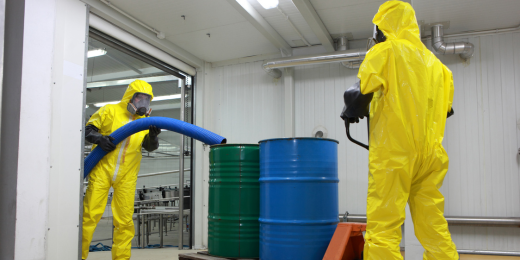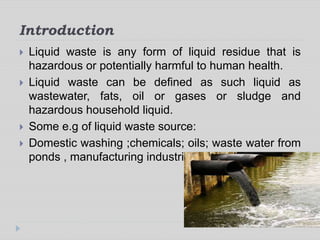Some Known Questions About Reclaim Waste.
Table of Contents10 Simple Techniques For Reclaim WasteThe Of Reclaim WasteA Biased View of Reclaim WasteThe Buzz on Reclaim WasteFacts About Reclaim Waste Revealed
Check out the kinds, events, and kinds of fluid waste. Domestic sewage waste describes the waste and products from a household sewage-disposal tank. This kind of waste is created by people in residences, institutions, and other buildings. This only includes septic systems that have a drainpipe field. The proper monitoring and disposal of residential sewage waste call for liquid waste to be transferred to a sewage therapy plant where the proper methods and devices are related to detoxify and get rid of waste.
Business waste frequently consists of possible hazards, such as combustible materials or a blend of fluid and strong waste products, and requires an advanced and comprehensive disposal process. The disposal of business waste commonly involves the filtering of waste prior to transport to ensure risk-free and proper disposal. Hazardous waste is produced from byproducts and drainage of industrial procedures and production.
This sort of waste can not use the exact same sewage management transportation or procedures as septic or commercial fluids. The industrial waste management process needs the evaluation and screening of fluid waste before it undergoes the disposal process (industrial wastewater treatment). Overflow waste is the fluid waste that originates from runoff and excess stormwater in very booming areas or cities
Overflow waste can cause contamination and flooding if not taken care of correctly. Making certain correct waste administration can prevent calamities and minimize environmental harm.
Reclaim Waste for Dummies
Get in touch with PROS Providers today to discover concerning our waste monitoring and disposal services and the appropriate methods to look after the fluid waste you create.
This so-called 'wastewater' is not just an essential source but, after treatment, will be released to our land, waterways or the sea. Utilized water from commodes, showers, bathrooms, cooking area sinks, washings and commercial processes is understood as wastewater.

water utilized to cool down equipment or tidy plant and equipment). Stormwater, a type of wastewater, is overflow that moves from farming and urban locations such as roofs, parks, gardens, roadways, courses and rain gutters right into stormwater drains, after rain. Stormwater streams without treatment directly to local creeks or rivers, at some point reaching the sea.
The Ultimate Guide To Reclaim Waste
In Queensland, most wastewater is treated at sewage therapy plants. Wastewater is delivered from residential or commercial sites with a system of sewers and pump terminals, called sewerage reticulation, to a sewer treatment plant. City governments develop, keep and operate most sewage therapy plants. Operators are accredited under the Environmental Management Act 1994 to release cured wastewater at an acceptable ecological standard right into rivers.
The Department of Natural Resources advises city governments regarding managing, operating and preserving sewage systems and therapy plants. In unsewered locations, neighborhood governments might call for householders to install individual or household sewer therapy systems to deal with residential wastewater from toilets, kitchen areas, shower rooms and laundries. The Department of Natural Resources authorises the use of house systems when they are proven to be reliable.
In some new subdivisions, treatment of some stormwater to remove trash, sand and crushed rock has started making use of gross pollutant traps. Wastewater treatment happens in four stages: Gets rid of solid issue.
Uses tiny living organisms recognizes as micro-organisms to damage down and eliminate remaining dissolved wastes and great bits. Micro-organisms and wastes are incorporated in the sludge.
Not known Incorrect Statements About Reclaim Waste
Nutrient removal is not offered at all sewer treatment plants because it needs costly specialized devices. Clear fluid effluent produced after therapy may still have disease-causing micro-organisms - liquid waste removal.

Most wastewater streams into the sewage system. Under the Act, neighborhood federal governments administer authorizations and permits for environmentally relevant activities (Ages) including wastewater releases that could have a regional effect.
What Does Reclaim Waste Mean?
Or else, samples are considered research laboratory evaluation. Frequently many examinations are needed to establish the levels of each of the different pollutants such as oils, heavy steels and chemicals in water. Surveillance provides valid information regarding water high quality and can confirm that licence conditions are being fulfilled. The information acquired with surveillance supplies the basis for making water quality decisions.
Comments on “Unknown Facts About Reclaim Waste”